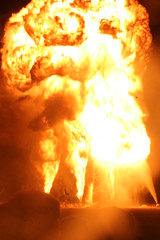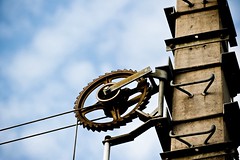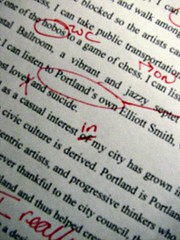Yesterday, I said “if the character’s goal or purpose isn’t early in the scene, we can risk losing our readers.” I believe that’s true—but at the same time, I recognize that sometimes, it would make no sense for us to jump from the previous scene to the scene goal or start of the action without motivating the POV character properly.
This is one of those times where it’s vital to have a sequel—a “scene” where we focus on the character’s emotional reaction to the action of a scene. Most of the time, we tack these onto the end of the appropriate scene—but that’s not always  going to work. Say, for example, we were in Jimmy’s head for the confession scene and his sequel—he tells Gina that they really can be together. Then we move on to Gina tearing up all his letters. Huh?
going to work. Say, for example, we were in Jimmy’s head for the confession scene and his sequel—he tells Gina that they really can be together. Then we move on to Gina tearing up all his letters. Huh?
We need a sequel in Gina’s perspective to clarify her motivation. But starting her scene with half a page (or more) of her emotions and thoughts in reaction to the last action is . . . well, slow. (Especially if we just saw Jimmy’s emotions and thoughts on the same subject.)
So how do we make the reader understand? One great way to create tension is not to explain these actions—at first. The reader is taken aback by this interesting or inexplicable action—and they’re eager to not only find out what happens next, but to learn why this is happening now.
As James Scott Bell says in Revision And Self-Editing, you can “marble in” this sequel information through the beginning of the scene. As she rips up the letters, we have a natural reason for her to think about the last scene and to give us her response—and now we’re really compelled to find out.
This can be effective within scenes, too. I found a scene in my WIP where, halfway through, a minor character gave a two paragraph monologue to the hero to catch him (and us) up on her subplot. I’d interrupted the speech with the hero’s thought about the minor character’s habit to ramble, but still, the blocks of text were more than even I really wanted to read.
After she finished the speech, she went and retrieved a piece of evidence in a crime—a threat against her. I realized if I had the minor character hand him that evidence first, the readers would be pretty surprised—and now they want to know how she crossed the bad guys. Then her speech could keep the readers’ attention.
It can also be useful to pick up the pace (and increase suspense)—if a lot of our scenes are actually sequels, the story can slow down. If that’s not the appropriate pace for the story, ending scenes with disasters and combining sequels with the beginning of the next scene can also help speed up the action of the story.
Of course, this technique shouldn’t be used too often—we don’t want our readers to get whiplash from all those head-fakes. But it can be used to ramp up the tension at the beginning of a scene, and make the reader want to know about the emotional reaction that led the characters there.
What do you think? How do you handle necessary sequels? Do you use the “head-fake” explosion opening?
Photo by Rob


